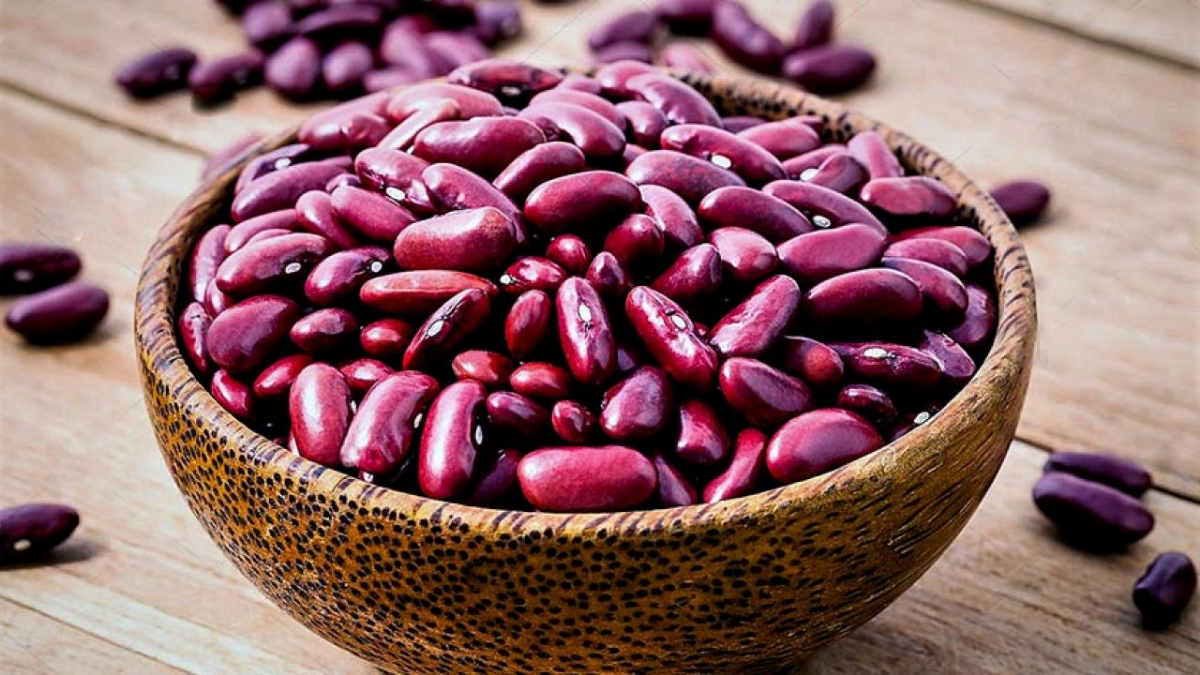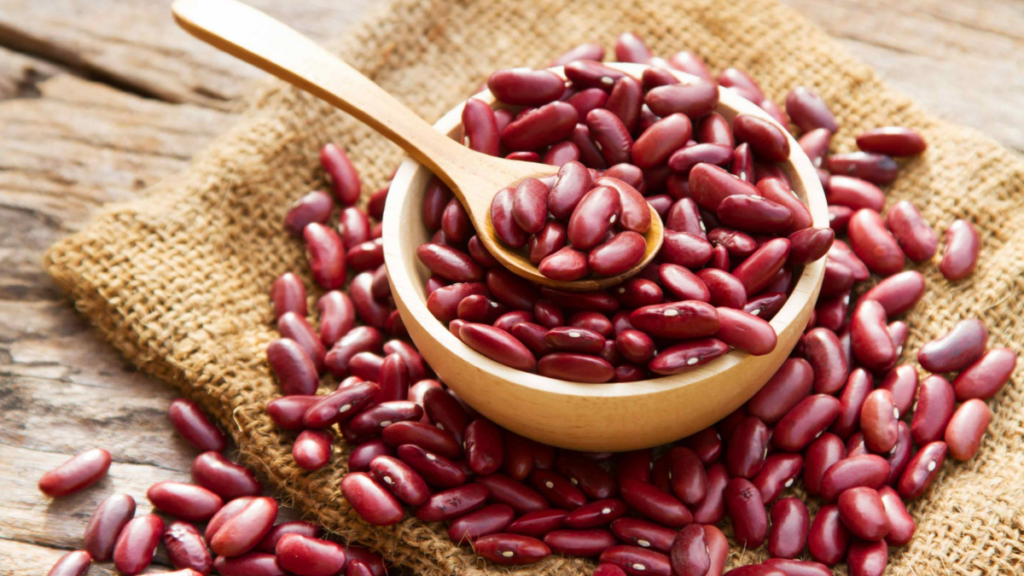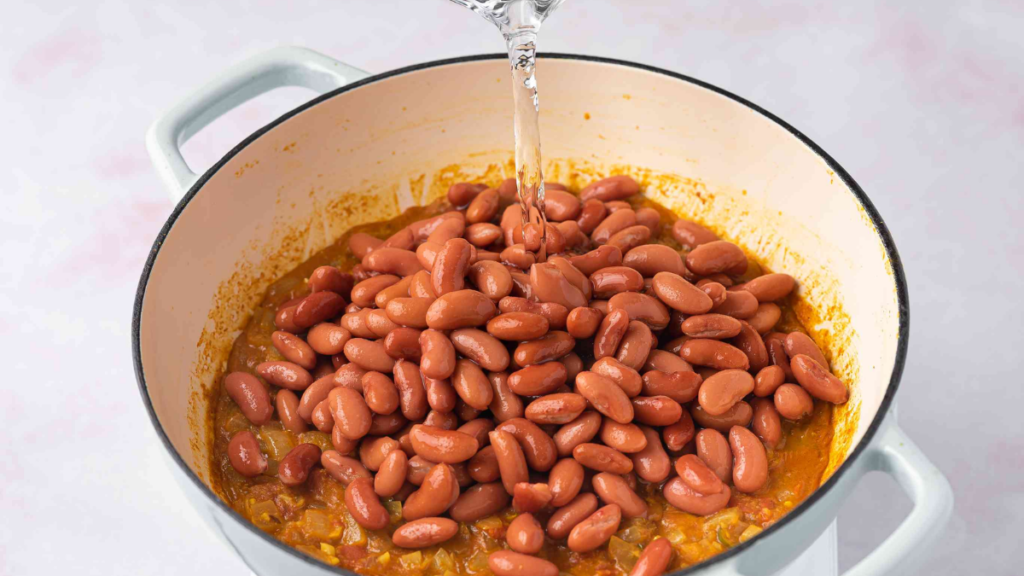Kidney beans are a low-cost, versatile food with many nutritional and health benefits. Adding kidney beans to your meals is a simple way to increase protein and fiber without adding many calories to your diet. While red kidney beans are the most common, white, purple, and even striped kidney beans are available to brighten up your plate. Kidney beans are primarily made up of carbohydrates and fiber, but they also provide a good source of protein. To know kidney beans nutrition facts, read further.
Kidney beans are a common bean (Phaseolus vulgaris), a Central American and Mexican legume. The common bean is an important food crop and a major source of protein throughout the world. Kidney beans are commonly eaten well cooked and are used in various traditional dishes. Kidney beans that are raw or improperly cooked are toxic, but well-prepared beans can be a healthy part of a well-balanced diet. White, cream, black, red, purple, spotted, striped, and mottled is just a few colors and patterns available.
Kidney Beans Nutrition Facts
What are Exactly Kidney Beans?
Kidney beans are a nutritious food with a variety of health benefits. In kidney beans, proteins, fibers, vitamins, minerals, and antioxidants abound. Kidney beans can help you lose weight by preventing the accumulation of fats and lipids in your body. Because of its anti-diabetic properties, eating salads with soaked kidney beans may aid in blood sugar management. Its antioxidant and anti-inflammatory properties also help lower the risk of diabetes complications.
There are different classifications of kidney beans, such as:
- Red kidney bean
- Lightly speckled kidney bean.
- Red speckled kidney bean
- White kidney bean
What are the Health Benefits of Kidney Beans?
Nutritionists have been studying legumes, including kidney beans, for years. They’re widely consumed, low-cost, and grown all over the world. According to research, increasing your bean intake has some health benefits.
Aids Healthy Weight Management
“Replacing energy-dense foods with legumes has been shown to have beneficial effects on the prevention and management of obesity and related disorders, such as cardiovascular disease, diabetes, and the metabolic syndrome,” according to a study published in Obesity Reviews. To reduce fat and calories, the authors recommend replacing high-calorie, high-fat meaty foods (such as burgers and sausage) with beans or combining a smaller portion of meat with legumes when cooking these foods.
Lowers Cholesterol
Beans in your diet can help lower LDL cholesterol, according to a study published in the Canadian Medical Association Journal (also called “bad” cholesterol).
Improves Blood Sugar Control
According to another review of studies, increased intake of beans, peas, and lentils can help people with and without diabetes improve long-term glycemic control in their diets.
Supports Beneficial Bacteria
Kidney beans’ fiber and resistant starch act as prebiotics, feeding the good bacteria in the gut. This improves digestive health and may even aid in preventing certain cancers.
Risk
Where kidney beans are healthy, there are also some risks of eating kidney beans:
- Phytohaemagglutinin, a toxic protein found in raw kidney beans, is abundant. Many beans contain phytohaemagglutinin, but red kidney beans have the highest concentration.
- Human and animal cases of kidney bean poisoning have been reported. Diarrhea and vomiting are the most common human symptoms, which can necessitate hospitalization.
- Antinutrients, which are substances that reduce nutritional value by impairing nutrient absorption from your digestive tract, are abundant in raw and improperly cooked kidney beans.
- Beans can cause unpleasant side effects, such as bloating, flatulence, and diarrhea. These effects are caused by insoluble fibers called alpha-galactosides. They’re part of a group of fibers known as FODMAPs, which can make irritable bowel syndrome symptoms worse (IBS)
How to Prepare?
Rinse dried kidney beans to remove any dirt or dust before cooking. Remove any beans that are cracked or broken. Soak in cool water for at least one night. Add one cup of beans to three cups of water, brought to a boil. Simmer for at least 30 minutes, though the amount of time depends on your taste and texture preferences.
Kidney beans have a mild, creamy, nutty flavor that makes them a versatile ingredient to use in various dishes. Toss a handful of the beans into your favorite soup, stew, or salad recipe to add flavor and nutrition. Also, if you run out of kidney beans in a recipe, you can easily substitute pinto beans or black beans (and vice versa, if you have kidney beans in stock).
What’s the Difference Between Kidney, Red Beans, and Pinto Beans?
Beans are available in various shapes, sizes, colors, and flavors. Even so, figuring out the differences between varieties and which beans to use for dinner tonight can be perplexing.
Kidney, red, and pinto beans are three types of frequently confused beans. All three are commonly used in similar cuisines, such as southern cooking, stews, and baked beans. They even have a striking resemblance in appearance!
Kidney Beans
Kidney beans are by far the largest and plumpest of the three. Unlike other beans, kidney beans have a much more distinct shape that isn’t as round and oblong as other beans and resembles a kidney. What a strange coincidence! Their thicker dark red skin makes them ideal for and commonly used in various dishes cooked for long periods, such as chili, baked beans, and jambalaya. They are excellent at soaking up and absorbing other flavors. However, they can also be a hearty and healthy salad protein topper.
Red Beans
Many people confuse red beans and kidney beans, but they are two different types of beans! You can see the visual differences right away when you put one next. Red beans are much smaller than kidney beans, one of the largest beans, and they still have the classic oblong shape. While both are red, kidney beans are a darker, more crimson color, whereas red beans are a much brighter, almost pinkish-red color and have a much “beanie” flavor. Red beans and kidney beans are frequently used in rice and stew recipes despite their differences.
Pinto Beans
Pinto gets its name from the brown, streaky color they have when they are raw, which is the Spanish word for paint. They do, however, take on a more solid reddish-brown color when cooked, resembling red beans and kidney beans. The flavor and texture of pinto beans, on the other hand, stand out the most. Pinto beans are much softer and creamier in texture than the other two, with a stronger nuttiness, making them ideal for mashing. They’re a common ingredient in dishes like rice and beans, soup, chili, and baked beans from the south and south of the border.
Which Bean Should you Use in your Dinner Recipe?
These three beans are used in many of the same recipes, but pinto beans are the clear winner of Latin or Mexican cuisine! While red beans and kidney beans can be used interchangeably, we will always choose the kidney bean! Kidney beans absorb flavors better than other beans, and their thicker skin makes them pop when you bite into them! Our pinto and kidney beans are delicious, hearty, and flavorful and are ideal for any recipe you want to serve at the dinner table! Our beans can be found in the center aisle of your favorite local supermarket and online. Grab a few jars of each and try some of our favorite pinto and kidney bean recipes, such as these!
Storage and Food Safety
Dry beans should be kept in an airtight container or another cool, dark location in your pantry. Any bean should keep for up to 12 months if stored properly. When cooked kidney beans are refrigerated in an airtight container, they will last three to five days. Beans are available throughout the year. Look for whole, uncracked beans that haven’t been exposed to dirt, dust, or moisture when purchasing legumes. Dried (uncooked) beans can be purchased in bags or boxes, but many stores also sell raw kidney beans in bulk, allowing you to buy only what you need.
Conclusion
Kidney beans are a great plant-based protein source. Minerals, vitamins, fibers, antioxidants, and other unique plant compounds. As a result, these beans may help with weight loss, colon health, and blood sugar regulation. On the other hand, kidney beans should always be well cooked, and beans eaten raw or cooked incorrectly are poisonous.
Kidney beans have a mild flavor and can be used in various savory dishes. They can also be used as a flavor carrier, absorbing any seasoning you add to your meal. To boost the protein content of your salads, try adding cooked kidney beans. To boost the nutrient profile of your meals, add them to curries, stews, or chillis. You could even blend them to make a dip for crudites or chopped vegetables. Look for other nutritious cooking ingredients to make nutritious meals that taste great and are good for you.



